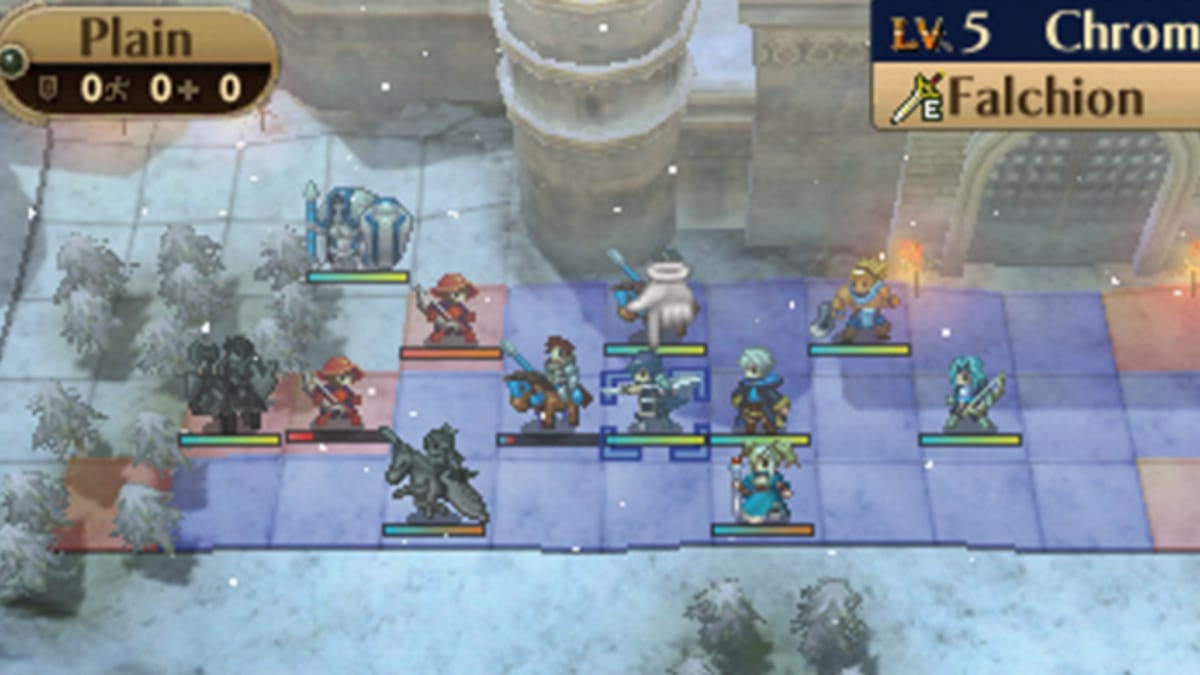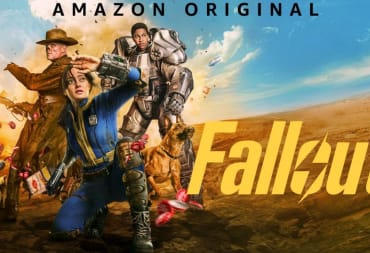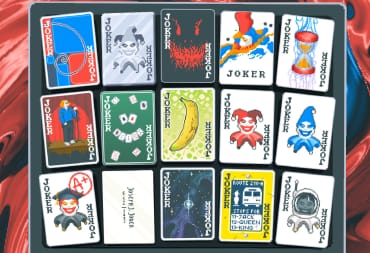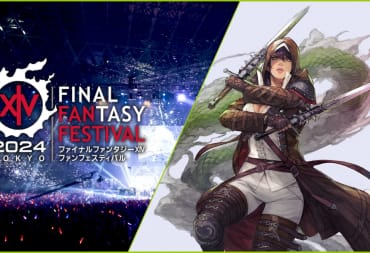Some genres of role-playing games tend to be very self-explanatory in what we call them. In the West, we are used to seeing Action-RPGs and Dungeon Crawls mingle with real-time role-playing games or open-world titles. One genre that is curiously absent from the conversation of role-playing games, and on the radar for most players, is the tactical role-playing game, or TRPG.
TRPGs can arguably have their origins traced to the game Chess, where you need to use tactics to overwhelm your opponents in a combat situation. TRPGs are less exploration-heavy, more combat-oriented, complete with statistics and level-ups, equipment, and abilities that need to be taken into account to maximize your effectiveness in battle. Through this, TRPGs tend to satisfy a singular niche—games with storytelling and tactical combat being the emphasis over exploration.
Tactical RPGs are not a heavily popular sub-genre in North America, and there may several factors as to why. The biggest hurdle is not necessarily just due to demand for TRPGs, but rather location of origin. See, TRPGs have been considered by many to be a “JRPG genre” for years, primarily due to many TRPGs—or Simulation RPGs as they are known in Japan—being Japanese exclusive, or primarily for consoles. That term, however, is a gross misnomer, especially in the past few years with a minor resurgence of TRPGs on the PC by Western companies, such as Dead State, Wasteland 2, and Blackguards. Even then, several games, both old and new, have utilized a tactical-based system as part of their gameplay mechanics since the 1980s, including the Ultima series.
The history of tactical role-playing games possibly begins with the game Tunnels of Doom in 1982. The title was for the TI-99/4A system, a Texas Instrument personal computer. Tunnels of Doom was a basic dungeon crawler, where you had a party of four traversing a dungeon in first person but participating in combat with tactical gameplay, an overhead view with free movement on a small battlefield.
Tunnels of Doom was very basic and not a well-known title compared to other contemporaries at the time. Two games in particular used the overhead map in regard to combat. The first is a game from Koei, titled The Dragon & Princess. Also released in 1982 on the NEC PC-8001 home computer, The Dragon & Princess was primarily a text-based game, with the exception of combat encounters. Any encounters you have will take place on an open battlefield with an overhead view.
Movement and combat are done through a basic tactical menu. Your party can move, attack, defend, or use magic, and have the whole map to move around, positioning your characters for a strategic advantage. Due to the text-adventure interface, only the combat has in-game graphics of any kind, so most of The Dragon & Princess is played through reading outside of the combat.
The second game was 1983's Ultima III: Exodus, which featured not only tactical-based combat but a full-blown graphical interface for most of the game. Exodus was also one of the first RPGs to feature animated characters and attempted to implement a sort of “rock paper scissor” system to fight enemies. Using magic or abilities on the right enemy would do more damage, adding another layer to the positioning of characters.
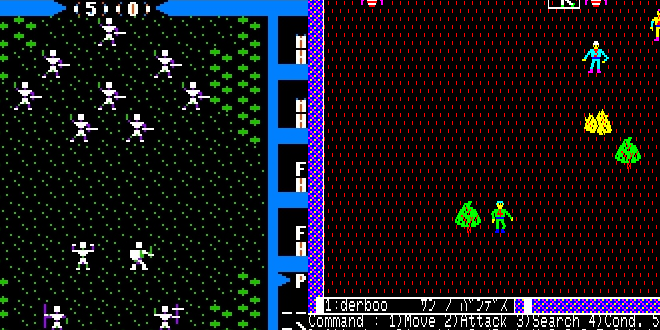
All three of these games would subsequently influence the direction of the sub-genre for the rest of the 1980s. Several well-known SSI Goldbox games, such as Pool of Radiance, used an overhead tactical-based system for their combat. In Japan, the title Bokosuka Wars would add even more common-place concepts, in particular the use of strategy game elements, arguably giving birth to the real-time strategy or RTS genre.
It should be noted here that there is a difference between tactics and strategy. Both terms tend to be considered interchangeable because they focus on similar base mechanics when used in video games. As author Adam Solo wrote, “strategy games normally present other challenges to the player other than the strategical, like tactical, logistical and economical challenges … strategy games come in different flavors and include tactical games as sub-genres.”
The basics are simple; tactics would deal with the details of the battle you are engaged in. Movement and using terrain, for example, would be tactics. The strategy employs longer-term goals and the bigger picture of the war at hand, such as sacrificing troops so that your best soldiers can launch an attack later on the same enemy. To put it another way, tactics focus on the current battle, strategy focuses on the entire war.
Strategy games tend to blend into several sub-categories that create further sub-genres for not only tactical role-playing games but RTS games as well. For example, turn-based tactics, or TBT, would include games such as Jagged Alliance or the X-Com series, which are tactical games with a turn-based combat scheme. The same combat scheme, even level-up systems, is found in many tactical RPGs. However, because games like Jagged Alliance and X-Com require planning ahead and focusing on when and where to strike, they are more fitting as strategy game versus role-playing game.
This distinction may seem minute, but is there nonetheless regarding the design of the games. X-Com, for example, has you in the shoes of a nameless commander directing troops who will likely die in the line of duty to accomplish your goals. This is expected by the player, so you need to think strategically to be successful in the game where losses will happen. Tactical RPGs focus more on the present battle, where your goal is to hopefully win without incurring a single loss, especially since you have named characters.
This is possibly a reason for the niche appeal of TRPGs over RTS games, especially on the PC. The emphasis on situational combat with either a small cast of characters or a limited amount of troops per battle is different from the complexities found in strategy games. The battles are in a vacuum in TRPGs by design; their purpose is to have players think tactically at the moment instead of worrying about the next battle down the road.
Now, this idea in and of itself is also flawed. Some of the most popular tactical RPGs in the world often employ a degree of strategic planning to get through their games. The Ogre Battle Series is renowned for the numerous classes, beasts, and characters you can recruit in a given game, and comes in two flavors for players: The Ogre Battle games, which are more akin to RTS titles, and the Tactics Ogre games, which are primarily TRPGs. This is not to say the two distinct series blend ideas together; the Tactics Ogre games are just as detailed and require some forward planning, just as much as the Ogre Battle games can live in the moment and use tactics to overcome a battle.
One of the most popular tactical RPG series in the world is the Fire Emblem series from Nintendo. Fire Emblem was among one of the first TRPG games to be released on consoles and is one of the first TRPGs to be commercially successful. The full title, Ankoku Ryū to Hikari no Tsurugi, or Shadow Dragon and the Blade of Light, borrowed elements of RPGs such as Dragon Quest with the use of turn-based strategy. Often cited as one of the first TRPGs, Shadow Dragon is more the forerunner to the modern look of TRPGs, with more simulation elements added, including movement speeds, elemental strengths and resistances, different weapon strengths and weaknesses, and randomized stat growths for those who participate in battles. Shadow Dragon also personalized your characters, offering a separate, automatic battle screen to showcase their abilities automatically with the use of sprites.
It should be noted that despite being a forerunner for typical tropes found in most tactical RPGs we see on consoles, the Fire Emblem series never saw the light of day outside of Japan for years. Shadow Dragon would be a Japanese-only title until 2009, when the game was remade for the Nintendo DS. In fact, the entire Fire Emblem series would not see Western releases until the early 2000s, thanks in part to the popularity of the characters Marth and Roy in the video game Super Smash Bros. Melee.
Tactical games that did arrive to the West were minor successes. Final Fantasy Tactics, Disgaea, the Shining Force games, and Ogre Battle would all take their cues primarily from Fire Emblem, tactical combat being the primary gameplay focus outside of the now popular turn-based style of combat or action-oriented combat by contemporary titles. Another trait found in some of these games is an often isometric point of view, and changes in terrain elevation and makeup, that added more gameplay considerations to the title. Finally, much like Fire Emblem, the inclusion of a personal story with named characters and protagonists was used as the framework for the game itself.
This is another major difference between tactical RPGs and strategy games. TRPGs often employ specific characters and a personal storyline to follow. There is a goal throughout the game and events and characters within the story interact with your decisions throughout, leading to diverging pathways, use of choice with consequence, and personal growth of an often-named protagonist. Strategy games are more focused on the bigger picture of course; there is choice and consequence, but they are more tangible and fully controlled by the player. Characters are nameless and you rarely have a “protagonist” to follow, rather a crop of characters you control based on their class.
Of course, some tactical RPGs like Disgaea and Tactics Ogre contain numerous generic characters to recruit, but often the emphasis of the main plot is on the primary characters. Many times these characters are given custom classes and abilities, or different character designs to emphasize their uniqueness among the generic soldiers in your party.
Now TRPGs are not just a genre found in Japan. Titles such as Fallout Tactics: Brotherhood of the Steel, Silent Storm, and Temple of Elemental Evil would be made for the PC with strong tactics-based gameplay. Most of these games are, however, based off of the ideas put forth by X-Com, so there is a heavier emphasis on the strategic elements over tactical elements. In fact, most PC games that emphasize TRPG gameplay have more in common as an off-shoot of RTS titles, in part due to the system they were made for; real-time strategy is still considered a PC-only genre that has rarely crossed over into consoles successfully.
Today though, we see many games on the PC now falling into the TRPG genre without many RTS elements. Perhaps the most high-profile title thus far is InXile's Wasteland 2, which has tactical-based combat as a primary feature of the game. Other titles have followed suit and further blended elements of TRPGs with not just RTS titles, but also survival games. Dead State, another Kickstarter game, combines all of these elements, including an in-game story, to recreate a zombie apocalypse scenario.
While I alluded to the forgotten nature of tactical RPGs in the opening paragraph, TRPGs are not a forgotten genre by any means. On handheld consoles, TRPGS are greatly popular, with Fire Emblem, Tactics Ogre, Final Fantasy, and other series such as Growlanser receiving re-releases, remakes, and even new installments, sometimes for the first time in the West. The growth of the role-playing game market is dependent on the growth of these genres, as players are now becoming more familiar with role-playing games through different mechanics.
Tactical role-playing games are now growing outside of the stereotypical point of view of being just a “JRPG genre.” Perhaps it was console limitations that made TRPGs more viable or popular, or perhaps the emphasis on storylines or straightforward mechanics was also a contributing factor to their design back in the 1990s. Many of these hallmarks for the most popular games in the genre are seen as a turn-off by some role-playing enthusiasts. The time investment for TRPGs is also a barrier as well; many games in the genre can feature gameplay that can last upwards of 100 hours at minimum.
The reason for the lack of discussion on TRPGs boils down to their niche appeal in the end; simply put, hardcore fans of TRPG games are the primary audience. Considering, however, their popularity on handheld systems in that niche, without TRPGs, the role-playing community would lose a vital part of its identity. Games like Fire Emblem are just as much of a role-playing game as Wasteland 2, and their shared gameplay mechanics in some respects emblematic of how diverse role-playing games can be. So never discount tactical-based gameplay when considering what the next role-playing game you want to invest time in is, perhaps you will be surprised as to how deep and engaging a TRPG can be.
This post was originally published in 2015 as a part of our Playing Roles series. It's been republished to have better formatting.
Have a tip, or want to point out something we missed? Leave a Comment or e-mail us at tips@techraptor.net
